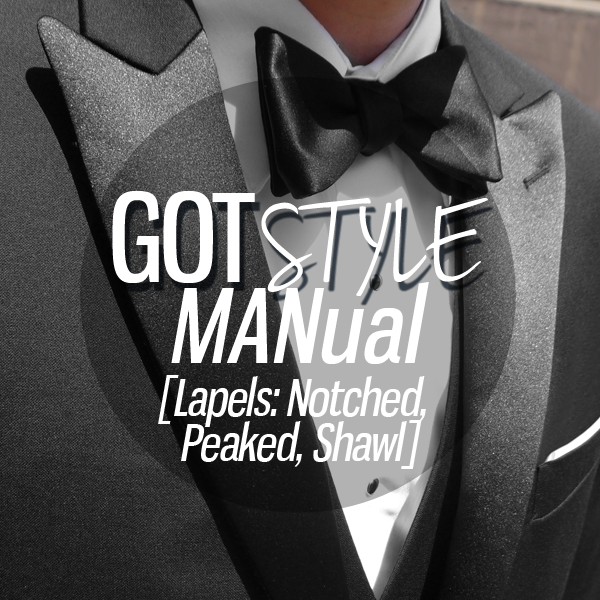Nothing does more to dictate a suit’s character than the lapel. But with so many varieties to choose from it can be challenging to know which style is right for you. In this GOTstyle MANual we offer you the beginners guide to lapels as we discuss the three basic and most common forms of lapels: notched, peaked and shawl.
Notched Lapel
Notched lapel (American English), step lapel or step collar (British English) is sewn to the collar at an angle, creating a step effect. This is the standard on single-breasted suits, and is used on nearly all suit jackets, blazers, and sports jackets. Though the size of the notch can vary, the typical style sits at approximately a 75% angel, anything smaller than that is called fishmouth. This was the first type of lapel to appear, is the most common style and most versatile of the bunch. If you only own one suit, this is the lapel type to go with.
Peaked Lapel
The peaked lapel (American English), or pointed lapel (British English), tends to be the most formal of the bunch and is typically featured on double-breasted jackets, and formal coats such as a tuxedos, tailcoats and/or morning coats. If you watch Downton Abbey on Netflix you’d recognize that in the late 1920s and 1930s, the single breasted peaked lapel jacket was considered a very stylish design. Today, we see the peaked lapel in all facets of life from formal wear to business wear. One of the great features of the peaked lapel is its elongating and slimming effect, making it great for larger men.
Shawl Lapel

Hilton Wool Shawl Collar Tuxedo: $898 $628.60
The shawl lapel, roll collar, or shawl collar, as it’s most commonly known, is defined by its continuous curve. Originally seen on the Victorian smoking jacket, it is now most common on the tuxedo and a great stylistic detail for any guy looking to stand out of the crowd at any formal occasion like a wedding, gala or red carpet event. Though typically never seen outside the realm of formal wear, we’ve noticed that many designers have started adopting this great style details into their ready-to-wear categories thus bridging the gap between formal and informal.





